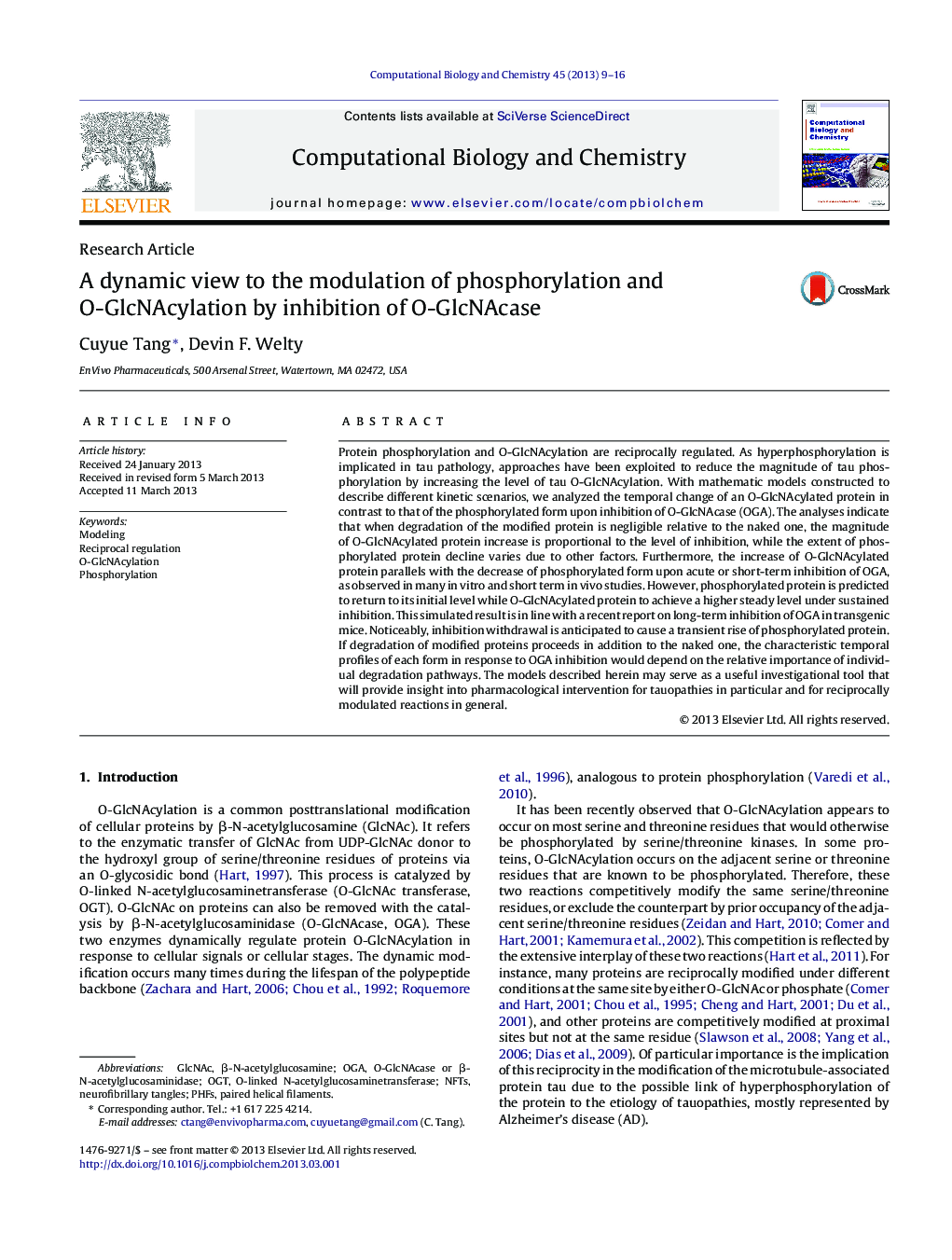| Article ID | Journal | Published Year | Pages | File Type |
|---|---|---|---|---|
| 15128 | Computational Biology and Chemistry | 2013 | 8 Pages |
•We constructed a mathematical model to describe the dynamics of reciprocally regulated tau O-GlcNAcylation and phosphorylation upon inhibition of O-GlcNAcase.•The model has provided insights into seemingly contradictory changes in phosphorylated tau level during long-term versus acute O-GlcNAcase inhibition.•The model may serve as a useful investigational tool in pharmacological interventions for tauopathies in particular and for reciprocally modulated reactions in general.
Protein phosphorylation and O-GlcNAcylation are reciprocally regulated. As hyperphosphorylation is implicated in tau pathology, approaches have been exploited to reduce the magnitude of tau phosphorylation by increasing the level of tau O-GlcNAcylation. With mathematic models constructed to describe different kinetic scenarios, we analyzed the temporal change of an O-GlcNAcylated protein in contrast to that of the phosphorylated form upon inhibition of O-GlcNAcase (OGA). The analyses indicate that when degradation of the modified protein is negligible relative to the naked one, the magnitude of O-GlcNAcylated protein increase is proportional to the level of inhibition, while the extent of phosphorylated protein decline varies due to other factors. Furthermore, the increase of O-GlcNAcylated protein parallels with the decrease of phosphorylated form upon acute or short-term inhibition of OGA, as observed in many in vitro and short term in vivo studies. However, phosphorylated protein is predicted to return to its initial level while O-GlcNAcylated protein to achieve a higher steady level under sustained inhibition. This simulated result is in line with a recent report on long-term inhibition of OGA in transgenic mice. Noticeably, inhibition withdrawal is anticipated to cause a transient rise of phosphorylated protein. If degradation of modified proteins proceeds in addition to the naked one, the characteristic temporal profiles of each form in response to OGA inhibition would depend on the relative importance of individual degradation pathways. The models described herein may serve as a useful investigational tool that will provide insight into pharmacological intervention for tauopathies in particular and for reciprocally modulated reactions in general.
Graphical abstractPredicted time-course of O-GlcNAcylated protein (P2) and O-phosphorylated protein (P3) under steady inhibition of O-GlcNAcase (K12) and after inhibition withdrawal.Figure optionsDownload full-size imageDownload as PowerPoint slide
